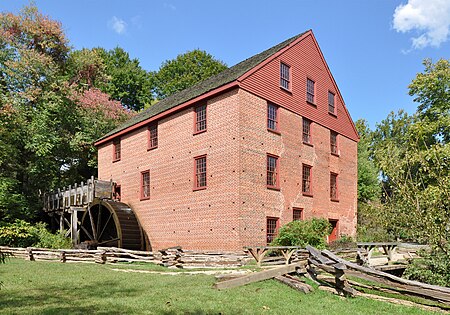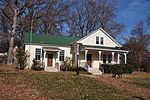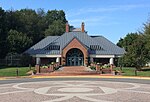Colvin Run Mill

Colvin Run Mill is in Great Falls, Virginia. Built c. 1811, Colvin Run Mill is the sole surviving operational 19th-century water-powered mill in the Washington, D.C. metropolitan area, and its restored mechanism is a nationally significant example of automated technologies pioneered in milling and later adopted across American industry. Down the gravel path of the park is the miller's house, home to the families who ran the mill. In 1883, Addison Millard moved his family here when he bought the old mill. Addison, his wife Emma, and some of their 20 children lived there. When Addison died, the family stayed and operated the mill until 1934. In the mid-1930s the mill was abandoned, and highway development caused it to be cut off from any near-by water source. The mill was later acquired by the Fairfax County Park Authority, repaired, and made open to the public.
Excerpt from the Wikipedia article Colvin Run Mill (License: CC BY-SA 3.0, Authors, Images).Colvin Run Mill
Nature Trail,
Geographical coordinates (GPS) Address Nearby Places Show on map
Geographical coordinates (GPS)
| Latitude | Longitude |
|---|---|
| N 38.968888888889 ° | E -77.293888888889 ° |
Address
Blacksmith Shop
Nature Trail
22066
Virginia, United States
Open on Google Maps









